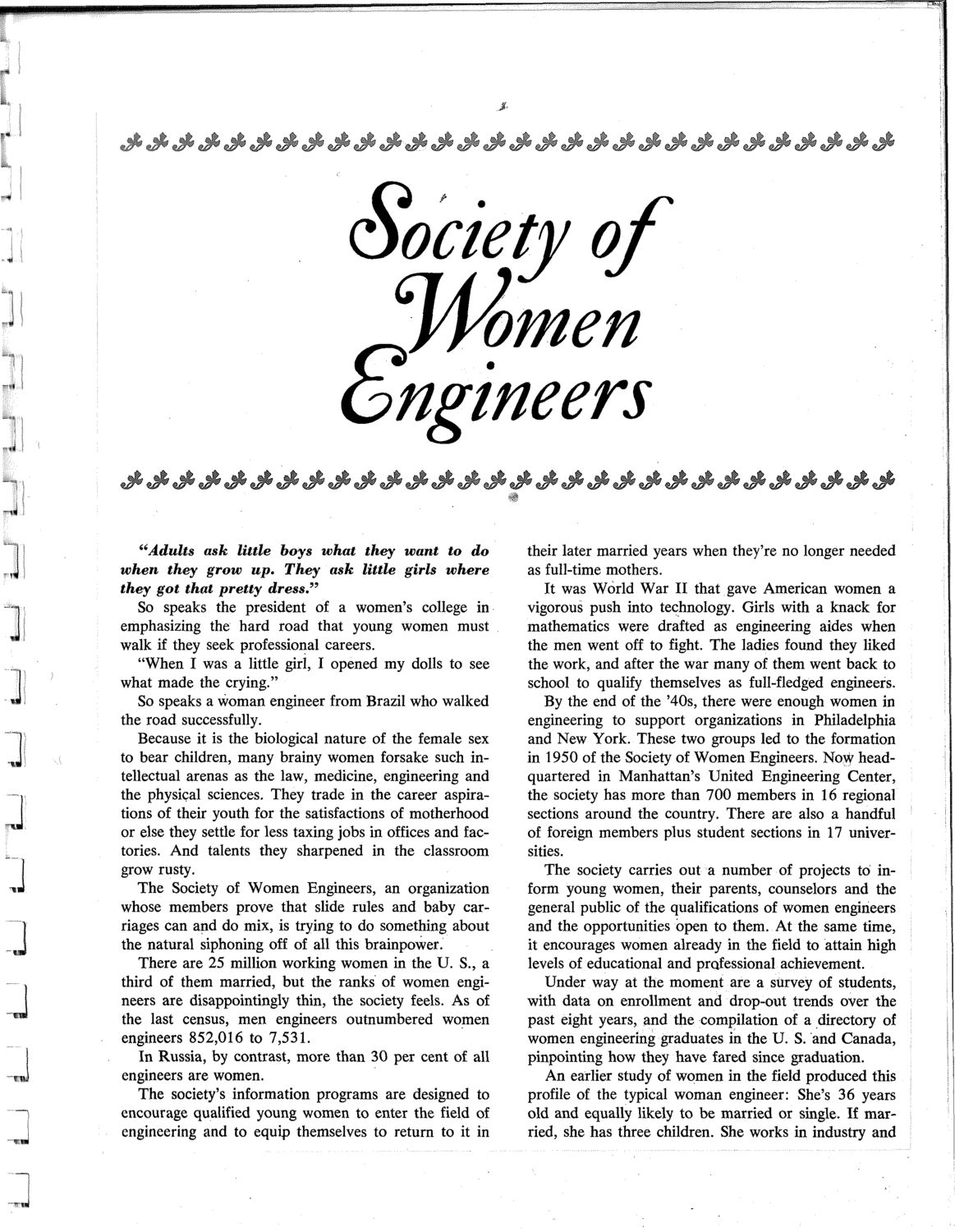| |
| |
Caption: SWE - News Clippings Book
This is a reduced-resolution page image for fast online browsing.

EXTRACTED TEXT FROM PAGE:
! • Society of , 'omen engineers "Adults ask little boys what they want to do when they grow up. They ask little girls where they got that pretty dress." So speaks the president of a women's college in emphasizing the hard road that young women must walk if they seek professional careers. "When I was a little girl, I opened my dolls to see what made the crying." So speaks a woman engineer from Brazil who walked the road successfully. Because it is the biological nature of the female sex to bear children, many brainy women forsake such intellectual arenas as the law, medicine, engineering and the physical sciences. They trade in the career aspirations of their youth for the satisfactions of motherhood or else they settle for less taxing jobs in offices and factories. And talents they sharpened in the classroom grow rusty. The Society of Women Engineers, an organization whose members prove that slide rules and baby carriages can and do mix, is trying to do something about the natural siphoning off of all this brainpower. There are 25 million working women in the U. S., a third of them married, but the ranks of women engineers are disappointingly thin, the society feels. As of the last census, men engineers outnumbered women engineers 852,016 to 7,531. In Russia, by contrast, more than 30 per cent of all engineers are women. The society's information programs are designed to encourage qualified young women to enter the field of engineering and to equip themselves to return to it in their later married years when they're no longer needed as full-time mothers. It was World War II that gave American women a vigorous push into technology. Girls with a knack for mathematics were drafted as engineering aides when the men went off to fight. The ladies found they liked the work, and after the war many of them went back to school to qualify themselves as full-fledged engineers. By the end of the '40s, there were enough women in engineering to support organizations in Philadelphia and New York. These two groups led to the formation in 1950 of the Society of Women Engineers. Now headquartered in Manhattan's United Engineering Center, the society has more than 700 members in 16 regional sections around the country. There are also a handful of foreign members plus student sections in 17 universities. The society carries out a number of projects to inform young women, their parents, counselors and the general public of the qualifications of women engineers and the opportunities open to them. At the same time, it encourages women already in the field to attain high levels of educational and professional achievement. Under way at the moment are a survey of students, with data on enrollment and drop-out trends over the past eight years, and the compilation of a directory of women engineering graduates in the U. S. and Canada, pinpointing how they have fared since graduation. An earlier study of women in the field produced this profile of the typical woman engineer: She's 36 years old and equally likely to be married or single. If married, she has three children. She works in industry and
| |